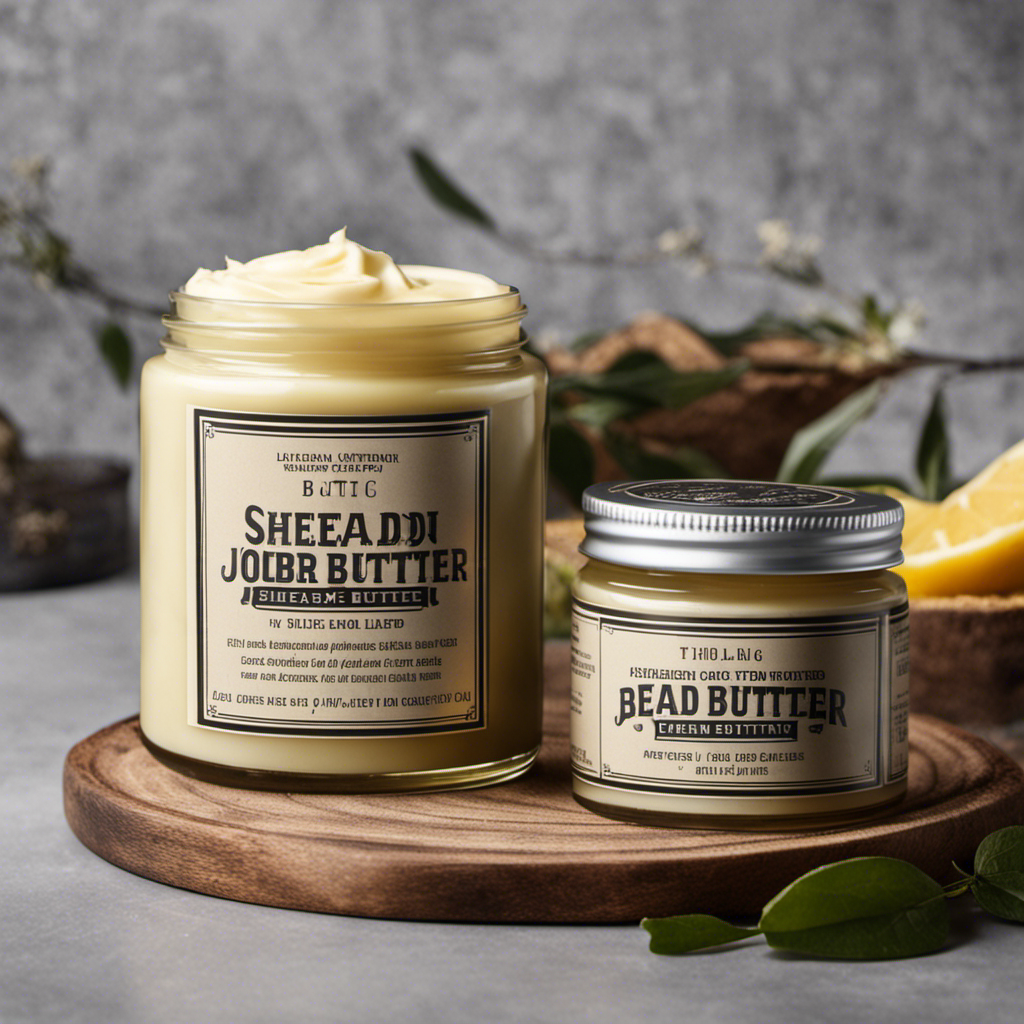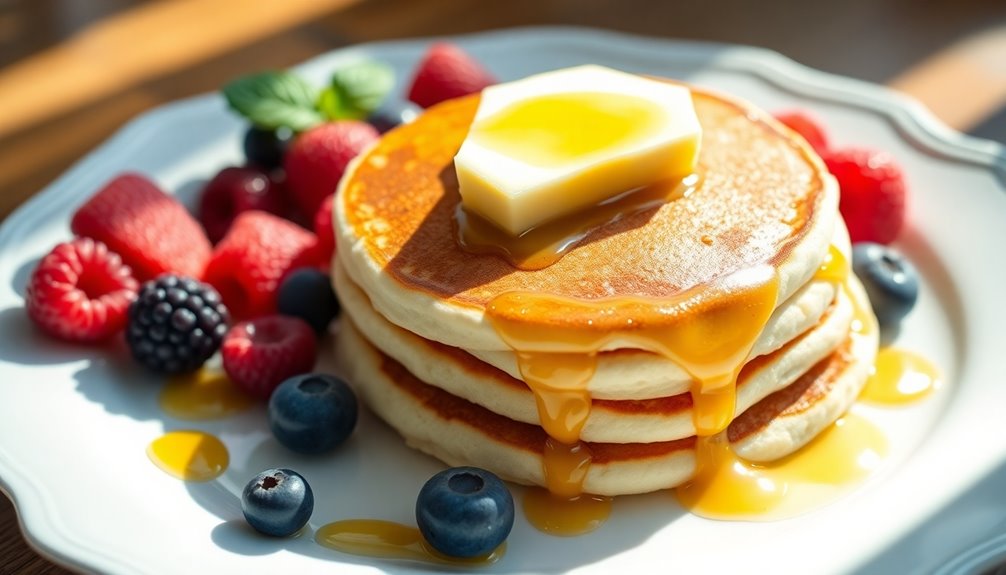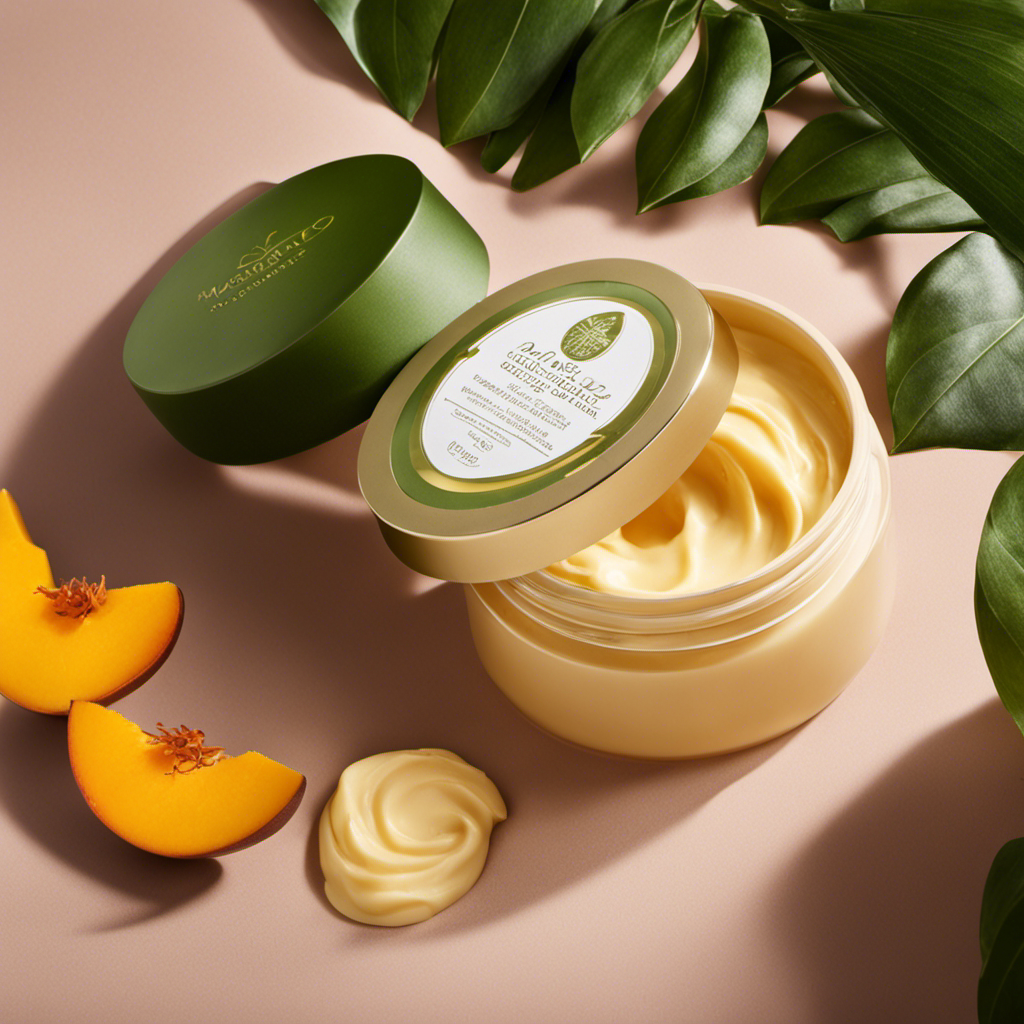If you’re struggling with stubborn butter stains on your clothes, you may be wondering how to effectively remove them. Don’t worry, I’m here to help with some proven methods to tackle those pesky spots.
In this informative article, I’ll walk you through the different types of butter stains, quick tips for removal, household items you can use, and a step-by-step guide to banishing those stains for good.
So, let’s roll up our sleeves and tackle those buttery mishaps together!
Key Takeaways
- Greasy butter stains can be removed by scraping off excess butter and applying dishwashing liquid directly to the stain.
- Oil-based butter stains on delicate fabrics can be absorbed with cornstarch or talcum powder.
- White vinegar or rubbing alcohol can be used if the stain persists.
- Consider professional dry cleaning as a last resort and always check the care label before attempting any stain removal techniques.
Types of Butter Stains
When you’re dealing with butter stains, you’ll encounter two main types: greasy butter stains and oil-based butter stains.
Greasy butter stains are common on fabrics like cotton or polyester, while oil-based butter stains typically occur on delicate fabrics like silk or satin.
To remove greasy butter stains, start by scraping off any excess butter with a spoon or butter knife. Then, apply a small amount of dishwashing liquid directly to the stain and gently rub it in. Rinse the fabric with warm water and repeat the process if necessary.
For oil-based butter stains on delicate fabrics, sprinkle some cornstarch or talcum powder on the stain to absorb the oil. Let it sit for a few minutes, then brush off the powder and gently blot the stain with a cloth soaked in dry cleaning solvent. Repeat until the stain is gone.
Quick Tips for Removing Butter Stains
When it comes to butter stains, it can be frustrating trying to get them out of your clothes. However, there are some effective stain removal techniques that can help.
In this discussion, I will share practical tips on how to remove butter stains and also provide advice on preventing future butter stains.
Stain Removal Techniques
To get butter out of clothes, you can try using stain removal techniques such as applying dish soap or laundry detergent. Gently blot the stain with a clean cloth to remove any excess butter. Then, apply a small amount of dish soap or laundry detergent directly to the stain and gently rub it in. Let it sit for a few minutes to allow the soap to penetrate the fabric.
After that, wash the garment as usual in cold water. If the stain persists, you can try using household hacks such as applying white vinegar or rubbing alcohol to the stain.
If all else fails, it may be best to take the garment to a professional dry cleaning service for professional treatment. Remember, always read the care label on your clothes before attempting any stain removal techniques.
Preventing Future Butter Stains
One way to avoid future butter stains is by being cautious while cooking or eating. Grease stains can be difficult to remove from clothing, so it’s important to take preventative measures. Here are some practical tips to prevent grease stains:
-
Use a splatter guard: When cooking with butter, cover the pan with a splatter guard to prevent hot butter from splashing onto your clothes.
-
Be mindful while eating: Take small bites and be careful not to drop butter-laden food onto your clothes.
-
Consider alternatives: Explore alternative uses for butter, such as using cooking spray or oil instead. This can help reduce the chances of grease stains.
By following these tips, you can minimize the risk of future butter stains on your clothes. However, accidents happen, so it’s always good to know how to remove butter stains if they occur.
Now, let’s move on to the next section about household items that can help remove butter stains.
Household Items to Remove Butter Stains
You can use common household items like dish soap or vinegar to remove butter stains from clothes. These butter stain removal hacks are easy and effective alternatives to store-bought stain removers.
Here are three items you can try:
-
Baking soda: Make a paste using baking soda and water, then gently rub it onto the stain. Let it sit for 30 minutes before washing.
-
Lemon juice: Squeeze fresh lemon juice onto the stain and let it soak for a few minutes. Rinse with cold water before washing.
-
Cornstarch: Sprinkle cornstarch onto the stain and let it absorb the oil. After a few minutes, brush off the powder and wash as usual.
By using these household items, you can save money and remove butter stains effectively.
Now, let’s move on to the step-by-step guide to removing butter stains.
Step-by-Step Guide to Removing Butter Stains
Start by gathering the necessary items for removing butter stains. There are different types of butter stains, such as fresh butter, melted butter, or greasy butter. Each type requires a different approach for effective removal.
For fresh butter stains, you’ll need a butter knife or spoon to gently scrape off any excess butter.
Melted butter stains can be treated by blotting the area with a clean cloth to absorb as much as possible.
Greasy butter stains can be tackled by applying a natural remedy, such as cornstarch or talcum powder, to absorb the grease before washing. It’s important to let the remedy sit for a few minutes before brushing it off and washing the garment as usual.
Common Mistakes to Avoid When Removing Butter Stains
Avoiding common mistakes is crucial when removing butter stains from your clothes. Here are some common mistakes to avoid:
- Rubbing the stain: Rubbing the butter stain can actually push it deeper into the fabric, making it harder to remove.
- Using hot water: Hot water can cause the butter stain to set into the fabric, making it even more difficult to remove.
- Using strong chemicals: Harsh chemicals can damage the fabric and may not effectively remove the butter stain.
To effectively remove butter stains, try these home remedies:
- Blot the stain: Gently blot the stain with a clean cloth or paper towel to remove any excess butter.
- Apply dish soap: Mix a small amount of dish soap with water and apply it to the stain. Let it sit for a few minutes before rinsing.
- Use vinegar: Mix equal parts vinegar and water, and gently dab the mixture onto the stain. Rinse with cold water.
By avoiding these common mistakes and using these effective home remedies, you can successfully remove butter stains from your clothes.
Now, let’s explore some natural remedies for butter stains.
Natural Remedies for Butter Stains
When it comes to removing butter stains from clothes, there are a few natural remedies that can help.
One effective method is using a mixture of lemon juice and vinegar. The acidity in the lemon juice and vinegar helps to break down the oils in the butter stain, making it easier to remove.
Another option is to create a baking soda paste by mixing baking soda with water and applying it to the stain. The baking soda acts as a gentle abrasive and helps to lift the stain from the fabric.
Lastly, using dish soap can also be effective in removing butter stains. Simply apply a small amount of dish soap directly to the stain, gently rub it in, and then rinse with cold water.
These natural remedies can be a great alternative to harsh chemicals and can help you get rid of butter stains easily.
Lemon Juice and Vinegar
To remove butter from your clothes, you can try using lemon juice or vinegar. Both of these natural remedies can effectively break down the oily residue and help lift the stain.
If you don’t have lemon juice on hand, you can try using another citrus fruit like orange or lime juice as an alternative. The high acidity in these fruits helps to cut through the greasy texture of the butter, making it easier to remove.
Vinegar, especially white distilled vinegar, is also highly effective in breaking down butter stains. Its acidic properties work to dissolve the oils in the butter, allowing you to easily wash it away.
Just remember to always test a small, inconspicuous area of the fabric first before applying lemon juice or vinegar to the entire stain.
Baking Soda Paste
Using a baking soda paste can be an effective way to remove stains from your clothes. It is a simple and natural solution that can be used on a variety of fabrics, including delicate ones.
To create the paste, mix equal parts baking soda and water until it forms a thick consistency. Then, apply the paste directly onto the butter stain and gently rub it in using a soft cloth or sponge.
Let the paste sit for about 30 minutes to allow it to penetrate the fabric and break down the stain. Afterward, rinse the garment with cold water and launder as usual.
Baking soda is a versatile ingredient that can be used as an alternative to harsh chemicals for removing stains, including butter stains, from delicate fabrics.
Dish Soap Method
After trying the baking soda paste method, I decided to give the dish soap method a shot. I had heard that dish soap can be effective in removing greasy stains like butter from clothes. I was skeptical at first, but I was willing to give it a try.
I gathered the following household alternatives for dish soap:
- Liquid dish soap
- Warm water
- Clean cloth or sponge
To remove the butter stain using dish soap, I followed these steps:
- Mix a few drops of dish soap with warm water in a bowl.
- Apply the soapy mixture directly to the stained area.
- Gently scrub the stain with a clean cloth or sponge, working the soap into the fabric.
I was amazed at how well the dish soap worked! The butter stain gradually faded away, leaving my clothes looking clean and fresh. It just goes to show that sometimes simple household alternatives can be just as effective as specialized stain removers.
Professional Cleaning Options for Butter Stains
If you’re not able to remove the butter stain from your clothes on your own, there are professional cleaning options available.
Professional dry cleaning is one such option that can effectively remove stubborn butter stains from your garments. Dry cleaners have the expertise and specialized equipment to tackle even the toughest stains. They use solvent-based cleaning agents that can break down and remove greasy substances like butter.
Additionally, many dry cleaners offer specialty stain removers that are specifically formulated to target and eliminate butter stains. These stain removers are powerful and can penetrate deep into the fabric to lift the stain from within.
Frequently Asked Questions
Can I Use Regular Soap to Remove Butter Stains?
Yes, regular soap can be used to remove butter stains from clothes. However, using dish soap specifically designed to cut through grease and oil is more effective. Additionally, alternative methods like using vinegar or rubbing alcohol can also help remove butter stains.
What Should I Do if the Butter Stain Has Already Set In?
If the butter stain has already set in, don’t panic. There are alternative methods you can try, like using dish soap or vinegar. If all else fails, consider taking it to a professional cleaner.
Can I Use Vinegar to Remove Butter Stains?
Sure, vinegar can be used to remove butter stains. However, I prefer using lemon juice as an alternative method. It’s effective and leaves a refreshing scent. Just apply it directly to the stain, let it sit, then wash as usual.
Are There Any Specific Fabrics That Are More Prone to Butter Stains?
Some common fabrics that are prone to butter stains include cotton, silk, and polyester. To prevent butter stains, you can apply a pre-wash stain remover or dish soap directly to the affected area before laundering.
How Long Does It Typically Take to Remove a Butter Stain Using Household Items?
Removing butter stains from delicate fabrics can be a tedious task. It usually takes a few minutes to remove the stain using household items. Here are some tips for removing butter stains from carpet or upholstery.
Conclusion
In conclusion, removing butter stains from clothes may seem like a daunting task, but with the right knowledge and tools, it can be done effortlessly.
By identifying the type of butter stain and utilizing household items like dish soap, vinegar, or baking soda, you can tackle the stain head-on. Remember to follow the step-by-step guide and avoid common mistakes such as using hot water or scrubbing vigorously.
For those who prefer natural remedies, lemon juice or hydrogen peroxide can work wonders. And if all else fails, don’t hesitate to seek professional cleaning options.
With these tips, you’ll be able to bid farewell to butter stains and keep your clothes looking fresh and clean. So go ahead, tackle those stains with confidence and be the butter stain-buster you were meant to be!










